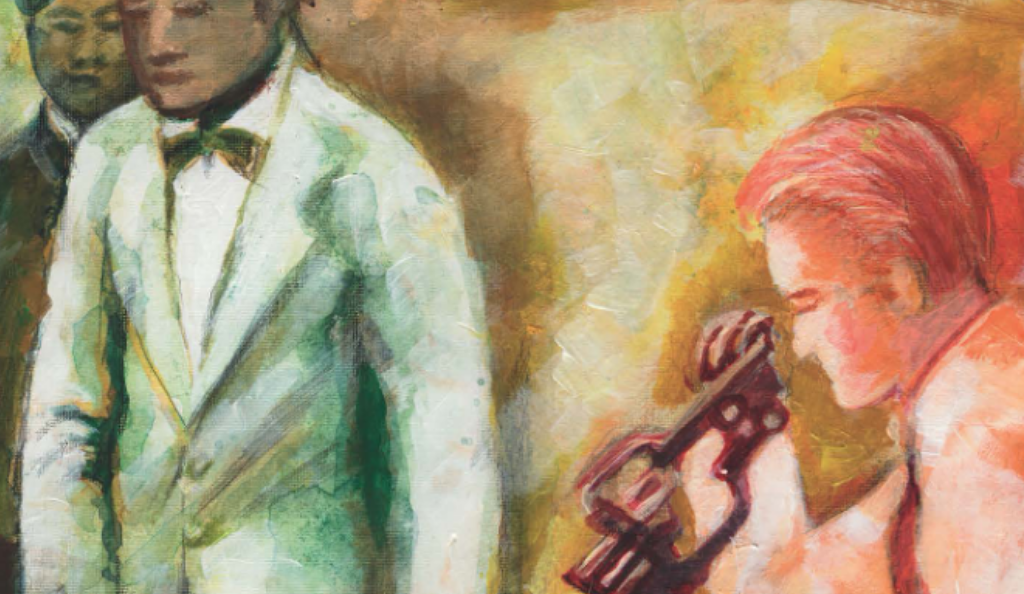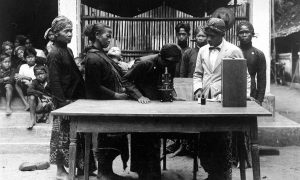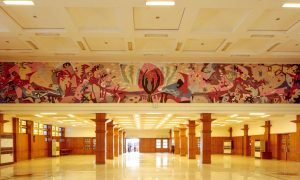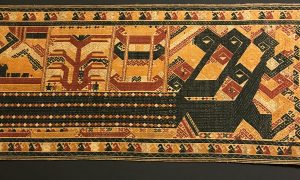Last week, PoP brought you Jarrah Sastrawan’s review of Nurturing Indonesia: Medicine and Decolonisation in the Dutch East Indies by Associate Professor Hans Pols. This week, we are pleased to bring you an extended essay by the author himself. Nurturing Indonesia will be launched at the University of Sydney on Thursday 27 September 2018, followed by a Betawi dance performance and refreshments. For more information and to register, please visit the Sydney Southeast Asia Centre’s website.
***
Most historians view colonial medicine as a tool of empire. Physicians working in the colonies first looked after the health of soldiers, who were necessary to maintain colonial rule. After that, they treated high colonial administrators and, if time permitted, traders and other Europeans. After the turn of the twentieth century, these physicians also looked after the health of indigenous plantation workers—after the colonial economy started to emphasise plantations rather than trade, the health of the colonised became an important factor in generating European profits. Colonial medicine consistently followed the monetary and political interests of the colonisers.

Nurturing Indonesia: Medicine and Decolonisation in the Dutch East Indies (Cambridge: Cambridge University Press, 2018)
In my book, Nurturing Indonesia, I present a different perspective on the role of medicine in the colonies. I analyse how medicine inspired anti-colonial sentiment, how it was useful articulating political arguments, and how it accelerated decolonisation. I investigate the ideas and activities of Indonesian physicians in the Dutch East Indies, many of whom were actively involved in the Indonesian nationalist movement. They were initially motivated by the discrimination they experienced within the colonial medical service. In a fascinating twist, their training in medical science helped them to interpret and articulate their discontent politically. After the 1860s (or so), political ideas were increasingly phrased using organicist, anatomical, and evolutionary metaphors in diagnosing the ills of the social body. Social Darwinism was applied to both Western and colonial societies. Physicians’ familiarity with these theories and ideas placed them in a unique position to diagnose the ills of the colonial social body and to propose curative interventions. The diagnoses and cures they proposed varied, but their political engagement remained consistent throughout the colonial period.

The microscope assisted students to develop a new perspective on health and disease: the symptoms of their patients were best explained by referring to the world made visible through the microscope. Microscopy practicum at Batavia Medical School, 1926. Image collection of the author.
Budi Utomo is well known as the first nationalist association in the archipelago. It was founded on 20 May 1908 by retired physician Wahidin Sudirohusodo, medical student Sutomo, and several of the latter’s fellow students at the Batavia Medical College (STOVIA).

The Museum of National Awakening in Jakarta. This museum is located on the premises of the former Batavia Medical College (STOVIA). Image by author.

Students at the STOVIA (Batavia Medical College) stood in between their own culture and that of the west. They incorporated both in their clothing. This photo was taken in 1907. Image collection of the author.
Almost all youth organisations (Young Java, Young Sumatra, Young Minahasa, Young Maluku), which were founded in the 1910s, were founded and led by medical students. These organisations brought Indonesian students together to discuss politics, and engage in social and cultural activities. In the 1930s they established boy scouts and girl guides groups to prepare cadres for the future independent nation.

Students at the Teachers College for Native Girls located in Salatiga. Notice the student on the front row demonstratively holding up the periodical of Young Java. Image collection of the author.
Several Indonesian physicians became well-known because of their political engagement. Physician, journalist, and physician Abdul Rivai argued that Indonesians would only be able to survive in the struggle for existence if they could benefit from the fruits of science, medicine, and technology through modern education.[i] Tjipto Mangunkusumo, the most principled and best-known physician-nationalist in the Dutch East Indies, once famously quipped that his colleagues in the colonial parliament were unable to take decisive action to cure Indonesian society of the cancer of colonialism because there were only quacks.[ii] After founding Budi Utomo and returning from advanced medical training in the Netherlands, Sutomo became an influential political leader. The Association of Indies Physicians—the place where Indonesian physicians expressed their discontent about remuneration and career prospects—became a group where political ideas were discussed. In the late 1930s, Abdul Rasjid, physician, parliamentarian, and president of this association, formulated the principles of his medical nationalism, which led to an unprecedented level of activity among Indonesian physicians. According to him, physicians were natural leaders within the organic communities of the archipelago.[iii]
I want to highlight two important moments that inspired my book. The first one was locating a short article entitled “Psychiatric Fascism”, which was published in the progressive Dutch East Indies magazine The Task [De Taak] in 1924.[iv] This article had an unambiguously clear title—impossible to ignore for a historian of colonial psychiatry. Its (anonymous) author(s) criticised a reactionary lecture given by P.H.M. Travaglino, the superintendent of the mental hospital near Surabaya, to a conservative political group.[v] Travaglino elaborated on the political implications of psychiatric insights into the native psyche. According to him, the “natives” were inherently lazy, emotional, suggestive, and deceptive, which was related to their undeveloped intellectual and moral capacities. Not surprisingly, primitive natives had primitive minds, and probably, primitive brains. According to Travaglino, the colonial administration should take this basic insight into account in its benevolent rule. For example, repressive measures were necessary to prevent opportunistic agitators gaining influence over the unwashed masses. Such agitators should be imprisoned or interned to ensure that the masses remained happy, peaceful, and industrious. With satirical flair, the author(s) of “Psychiatric Fascism” called out the deeply reactionary spirit that pervaded the psychiatrist’s lecture. To their dismay, a very similar lecture was held in The Hague for the august Indies Association (Indisch Genootschap)—a progressive colonial think tank guided by the principles of the Ethical Policy—by a second colonial psychiatrist a few months later.[vi]
As a historian of psychiatry, I was aware of the political implications of various speculations on the causes of mental illness, degeneration, and racially specific theories of human nature. Theories of what is normal, acceptable, and preferred are necessarily coloured by social, cultural, and political ideas. Colonial ideologies articulated by the rulers often contain implicit or explicit assumptions about the nature of the ruled and the characteristics of the latter’s culture. I had found two colonial psychiatrists who explicitly expressed opinions about these matters in medical and psychiatric terms.
One important feature in the lectures by both colonial psychiatrists was an implicit “mental pluralism”, which matched the ideas of other colonial intellectuals in the 1920s. According to the advocates of the Ethical Policy, the prominent Dutch colonial ideology from 1901 until the early 1920s, Dutch and Indonesian minds were essentially alike. It was due to unfavourable circumstances only that Indonesian minds lagged behind. While Dutch minds inhabited the modern present, Indonesian minds were still stuck in the Middle Ages. However, Ethicists believed that with education, irrigation, medicine, and technological innovation, Indonesians would eventually catch up—with Dutch assistance. The moment this would happen was always just around the corner, and it always stayed that way.
In the 1920s, however, conservative and even reactionary ideas became dominant among Dutch colonialists. Most of them came to believe that European and Indonesian minds were inherently different. This was part of a wider distancing of Dutch achievements from Indies cultures (which were now characterised as pre-modern and pre-logical), communities (ruled by customary rather than rational law), and economies (see, for example, J.H. Boeke’s Dual Economy).[vii] Rulers and ruled were now seen as essentially different, and it was unimaginable that Indonesians would at any point become rational and modern. These views inspired a range of colonial policies. Colonial life was best organised according to the principles of association (a euphemism for apartheid): white and brown were different (but equal), and natives were best left in their own sphere and to their own devices. It was best not to interfere in indigenous life, although it was still considered acceptable to force Indonesians to work on plantations and in mines at starvation wages.
After finding the presentations by two colonial psychiatrists and critiques of their ideas, I located an obscure pamphlet entitled Writ of Defence. Its authors systematically and humorously destroyed the views of both colonial psychiatrists. The pamphlet was published by the Netherlands Branch of the Association of Indies Physicians in 1924.[viii] Even though it was anonymous, it is clear that it was written by a number of Indonesian physicians who were living in the Netherlands for advanced medical training. Several of them were members of the increasingly radical Indonesian student association Perhimpunan Indonesia (Indonesian Association). The main author was psychiatrist J.A. Latumeten. He knew both colonial psychiatrists well: he had taken classes with one and had worked under the other. The second author was Mohamad Amir, a Theosophist with strong interests in spiritualism and politics. He had been chairman of the student association Young Sumatra and continued to be its main ideologue. He quit the Perhimpunan Indonesia under duress—after the Dutch Theosophists threatened to discontinue his stipend. Sukiman probably participated in writing the pamphlet as well, as did Sitanala, Sardjito, Sjaaf, and Kaligis—all physicians.
Indonesian nationalists, in particular the physicians among them, reacted vocally to the views of the two colonial psychiatrists. At the same time, the Indies Society (Indische Vereeniging)—a club established in 1908 by Indonesians studying in the Netherlands to organise lectures, outings, and social events—was becoming a radical and outspoken anti-colonialist political group named Perhimpunan Indonesia. In 1921, when Sutomo became its president, its members became more interested in politics. When Mohammad Hatta, Indonesia’s future first vice-president, joined the board in 1923, this process accelerated. It was at this crucial moment that the two colonial psychiatrists presented their political views. The opinions of both psychiatrists, and the rebuttals formulated by Indonesian physicians, came to play a crucial role in the radicalisation of this student group.

Members of the board of the Perhimpunan Indonesia in 1924. Standing, from left to right, Junaedi, Mohammad Hatta, Ichsan, and Dahlan Abdullah. Sitting, from left to right, Subardjo, Soekiman Wirjosandjojo (president and physician), and Nazir Pamontjak. Image courtesy of the International Institute for Social History, Amsterdam.
The ideas of the Perhimpunan Indonesia guided the Indonesian nationalist movement after 1925. The policy of non-cooperation, which it formulated in 1924, became highly influential. It entailed refusing to participate in the quasi-democratic political institutions set up by the Dutch and establishing social institutions to serve the needs of Indonesians. Its first coherent formulation appeared in the association’s journal, Hindia Poetra (Sons of the Indies), just before it was renamed Indonesian Merdeka (Free Indonesia). An article “The Psychological Conflict” contained a comprehensive psychological critique of colonialism, which, its authors argued, was supported by a profound belief in the incapacity and inferiority of the minds of the colonised.[ix] This belief had been internalised by the subjugated Indonesian population through a process of colonial hypnosis. The authors also underscored the psychological damage of colonialism. The article appeared anonymously, probably because it was a programmatic statement written by all members of the group’s board. Mohammad Hatta revisited these arguments frequently in his later writings.
In addition to the colonial army, the police force, and the intelligence services, argued the authors of the article, mass suggestion and hypnosis played a central role in maintaining colonial rule:
One of those means [to maintain Dutch supremacy] is mass suggestion: the injection of the idea of the superiority of the white race in Indonesian consciousness and the suggestion of national impotence. Each emerging idea or initiative is systematically and artificially paralysed by the forced hypnosis of ignorance with the psychological consequence of doubt in one’s own abilities.[x]
The authors called colonial hypnosis the “cornerstone on top of which the building of colonial domination has been erected.”[xi] Colonialism, by beguiling the minds of the colonised, had resulted in profound psychological damage: “internal debilitation and senility [resulting in] a sick organism … in a lethargic sleep.”[xii] In his famous defence speech before a Dutch court in 1927, Hatta stated: “The spiritual structure of the nation has been changed [and its] personality is temporarily broken.”[xiii]
To cure the psychological damage of colonialism and to break the spell of this colonial hypnosis, the authors proposed the policy of non-cooperation. No longer, they argued, should Indonesians ask the Dutch for favours, and wait patiently for them to be granted. At this point, it was clear that such favours would only be granted sparingly, if at all. Instead, Indonesians needed to organise themselves to obtain whatever they needed through their own initiative. They needed to establish shops, clinics, schools, banks, and unions—by themselves. Only by taking such initiative could Indonesians cure themselves of the inferiority complex that the Dutch colonial powers had bestowed upon them. Non-cooperation was the only way to break the spell of the colonial hypnosis.
This is a highly original set of ideas. Although Karl Marx had called religion the opium of the people, he never mentioned mass hypnosis. Nor had progressive Dutch politicians. Dutch physicians had published a few articles about hypnosis in medical journals while hypnotic stage shows were occasionally advertised in newspapers. From 1921 to 1924, physician Salomon Koster instructed advance medical students at the University of Amsterdam in the theory and practice of hypnosis. This provided Indonesian medical students studying in the metropole an opportunity to acquaint themselves with both. I do not know who subsequently applied medical ideas about hypnosis to the analysis of colonial society, but the intense discussions among the members of the Perhimpunan Indonesia provided ample opportunities for intellectual experimentation and creativity.
The critique of colonial hypnosis demonstrates that Indonesian nationalists took the medical and psychiatric ideas that justified the repression of the nationalist movement in the colonies and transformed them into arguments for decolonisation. It was a bold and subversive project. Other medical concepts were put to novel use to analyse colonial society as well. For example, Indonesian nationalists subverted ideas about indigenous organic communities by highlighting the damage colonialism had inflicted on them. Ki Hadjar Dewantara (who had been a medical student several years earlier, when he was called Suwardi Suryaningrat) drew on similar arguments to establish his independent Taman Siswa schools in the 1920s. These schools were not much to the liking of the colonial administration, which tried to close these “wild schools” repeatedly, without success.
After the publication of “The Psychological Conflict”, the Perhimpunan Indonesia proposed non-cooperation as the leading strategy for the Indonesian nationalist movement. Soon after, Sutomo founded the Indonesian Study Club in Surabaya. He became known for his efforts establishing Indonesian schools, clinics, trade unions, shops, and banks. Tjipto Mangunkusumo and Indo-European activist E.F.E. Douwes Dekker, who had, in 1912, led the Indies Party with Suwardi Suryaningrat—the first political party in the Indies explicitly advocating independence—founded the General Study Club in Bandung. One of the latter Club’s most outspoken members was a precocious architecture student called Sukarno, later the founding president of Indonesia. Later that year, Mohamad Amir informed his colleagues that the Association of Indies Physicians should stop acting like a physicians’ union and become a scientific society. Its periodical should publish the research conducted by its members to demonstrate that they were in no respect inferior to their Dutch colleagues. His colleagues agreed, and the Association changed accordingly.
The political speeches given by the two Dutch colonial psychiatrists had unintended and long-lasting effects, provoking a critique of colonialism and the formulation of the policy of non-cooperation. The ferment surrounding the radicalisation of the Perhimpunan Indonesia inspired Indonesians to formulate radical ideas, which often contained subversive appropriations of conservative colonial ideas. The debate about the nature of the native mind inspired a powerful, psychological critique of colonialism, and an equally powerful plan of action: non-cooperation.
Endnotes:
[i] Abdul Rivai, “De Demoralisatie van den Javaan [The demoralisation of the Javanese],” Oost en West, 30 Mei 1901, 2.
[ii] Tjipto Mangunkusumo in a speech to the Volksraad on 14 Nov 1918, Handelingen van den Volksraad, Tweede Gewone Zitting (Batavia: Volksraad van Nederlandsch-Indië, 1918), 168.
[iii] Abdul Rasjid, “Rede Uitgesproken op de in September j.l. Gehouden Vergadering van de Afdeeling Batavia [Speech to the Batavia branch of the Association of Indies Physicians],” Medische Tribune 28, no. 10 (1940): 265.
[iv] “Psychiatrisch Fascisme [Psychiatric Fascism],” De Taak 7, no. 311 (15 Jan. 1924): 1809-11.
[v] P.H.M. Travaglino, “Politiek en Psychologie [Politics and Psychology].” PEB Magazine, 21 Feb 1924, 86-93.
[vi] F.H. (Glastra) van Loon, “De Psychische Eigenschappen der Maleische Rassen [The Psychological Characteristics of the Malay Races],” Indisch Genootschap: Verslagen der Vergaderingen, 22 Feb 1924, 21-50.
[vii] J.H. Boeke, Dualistische Economie [Dual Economy] (Leiden: Van Doesburgh, 1930).
[viii] Bond van Indonesische Artsen, Afdeeling Nederland, Verweerschrift [Writ of Defence] (Amsterdam: Hesse, 1924).
[ix] “Het Psychologisch Conflict [The Psychological Conflict],” Hindia Poetra 1 (1923): 65-69.
[x] “Psychologisch Conflict,” 67.
[xi] “Psychologisch Conflict,” 68
[xii] “Psychologisch Conflict,” 67.
[xiii] Mohammad Hatta, “Indonesia Free,” In Portrait of a Patriot: Selected Writings, 205-97 (The Hague: Mouton, 1972 [1927]), 245.
Join the Perspectives on the Past conversation on Facebook and Twitter!
 Facebook
Facebook  Twitter
Twitter  Soundcloud
Soundcloud  Youtube
Youtube  Rss
Rss 


